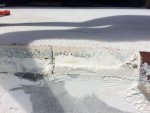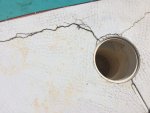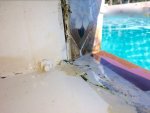I have a situation that I was told is called a bond leak. from the way it was explained, my pool was poured and then my deck was poured on top of the pool wall making the deck the top 4 or 5 inches of the pool.
supposedly over time the bond between the two pours has broken causing a water line leak. I took off a few tiles and ground off the mortar. I was expecting to see the seam where the deck and the pool wall meet but it looks seamless. I know I have a water line leak. but I was wondering if the leak is from the grout of the mosaic tile failing and water is just passing through the many cracked grout areas and then passing through the mortar and the cement pool wall? It doesn't seem like a water proof mortar is used on tile. Mine is very soft and came off pretty easy.
hopefully I explained it correctly
supposedly over time the bond between the two pours has broken causing a water line leak. I took off a few tiles and ground off the mortar. I was expecting to see the seam where the deck and the pool wall meet but it looks seamless. I know I have a water line leak. but I was wondering if the leak is from the grout of the mosaic tile failing and water is just passing through the many cracked grout areas and then passing through the mortar and the cement pool wall? It doesn't seem like a water proof mortar is used on tile. Mine is very soft and came off pretty easy.
hopefully I explained it correctly




